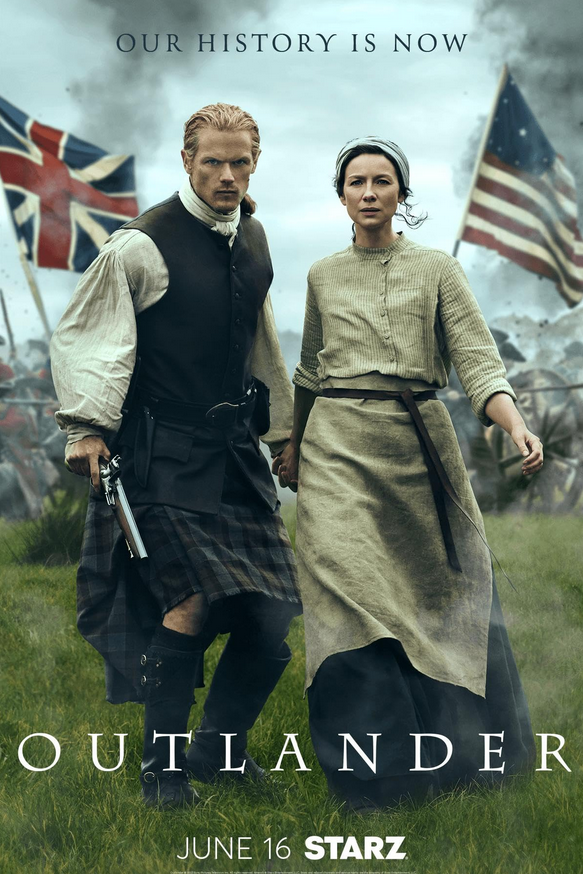The travels of Claire and Jamie through varied geographic and political landscapes — from Scotland and the Jacobite resistance of the early 1740s to the North Carolina backcountry and the American Revolution– illustrate the dynamism of the eighteenth-century British Atlantic World. For a popular series, Outlander especially presents a more complicated and nuanced portrait of the American Revolution than is typical in many works of popular culture such as The Patriot or Hamilton: An American Musical. Elements of the storyline of Outlander even compliment key themes in the historiography of the era. The series places the American Revolution within a larger British imperial context, it represents the lived experiences of ordinary people, including women, and conveys the fluidity of identity and allegiance in the British Atlantic, all of which challenge the myth of American exceptionalism at the root of much U.S. popular culture.
First, Outlander offers a broader temporal and geographic frame for understanding the American Revolution than most popular treatments, which start the story with the resistance in the American colonies, often focusing on eastern cities like Boston, Philadelphia, or sometimes New York. Outlander begins earlier — in 1740s Scotland. Depicted in seasons 1- 3, the suppression of Scottish Jacobites illustrates how Great Britain consolidated its control over the Celtic periphery of Ireland and Scotland before it attempted to centralize control over its North American colonies during the 1760s and 1770s. The former historical precedent heavily influenced the latter. Such continuities in the series effectively highlight how the British government sought to impose order in the colonial peripheries.
Set in the British Atlantic, Outlander illustrates the experiences of migration and movement that defined that world. After setting season 1 in Scotland, the scene shifts in season 2 to Paris, France, where Charles Stuart, a.k.a. “Bonnie Prince Charlie,” the Stuart claimant to the British throne, is in exile, and then back to Scotland in season 3 for the Jacobite defeat at Culloden, then to Jamaica, and finally to the mainland of British North America for season 4 and beyond. These geographic leaps show how many people moved around in the eighteenth century. The American colonies, contrary to the popular image, were neither static nor isolated, but part of a larger world of travel and trade, with such connections operating as forces for social, economic, and political transformation.
